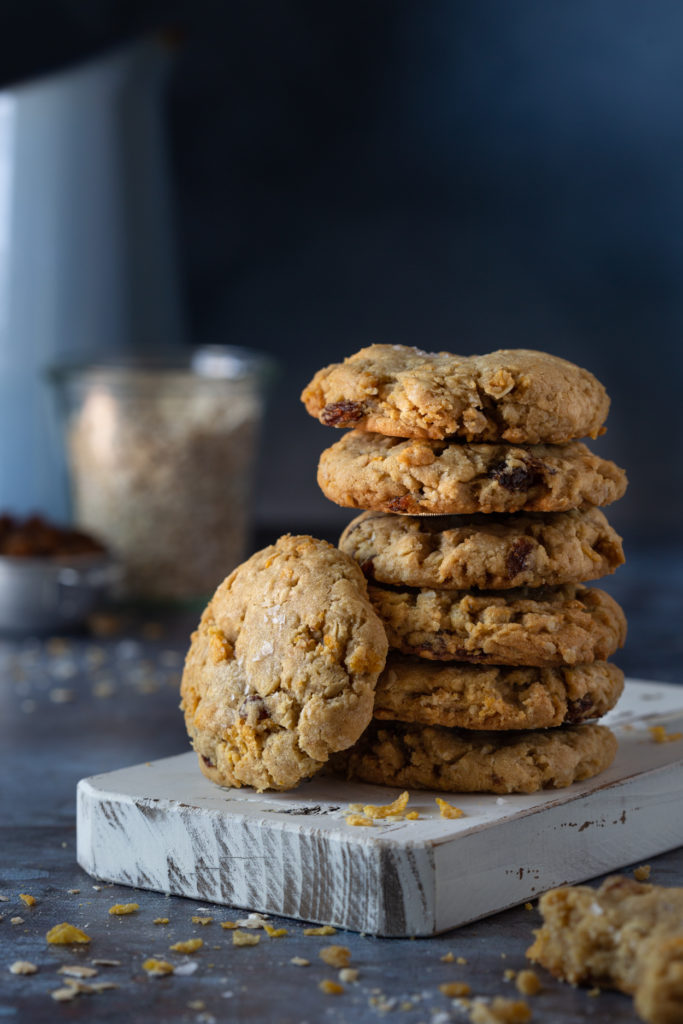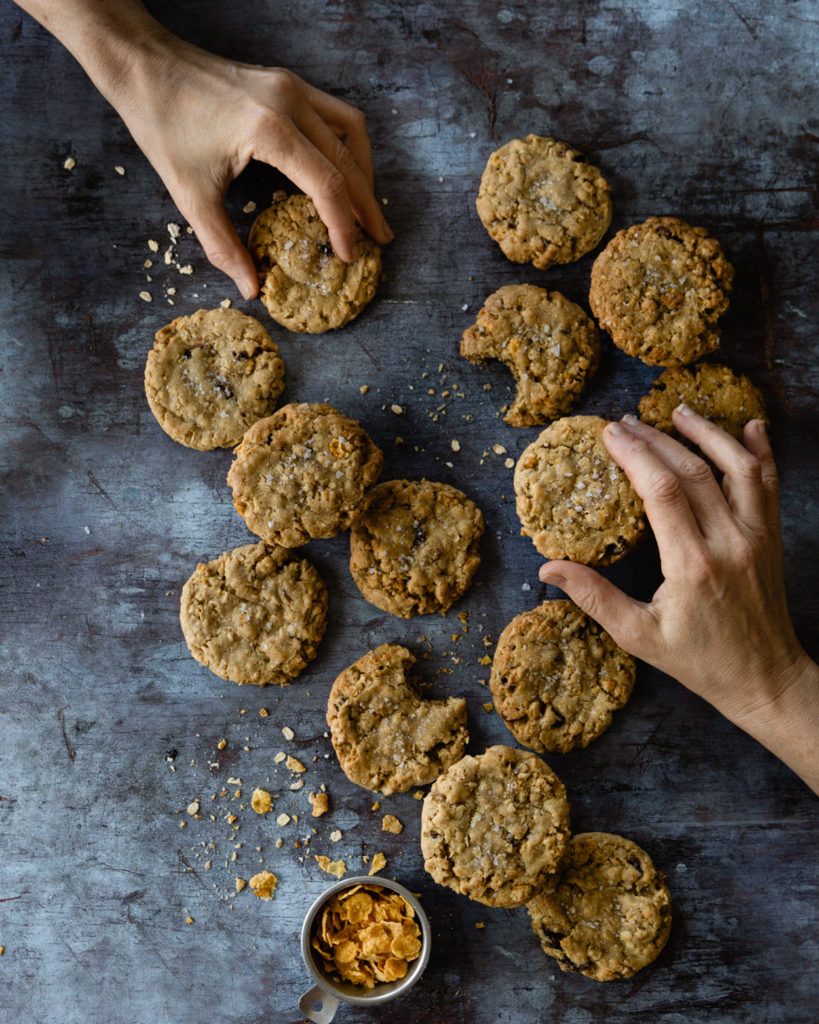
When Robyn over at Sweetish Co. posted about these cookies on Instagram a few weeks ago, my brain went on high alert. Oatmeal and cornflakes together in the same cookie? Sounded like breakfast to me!
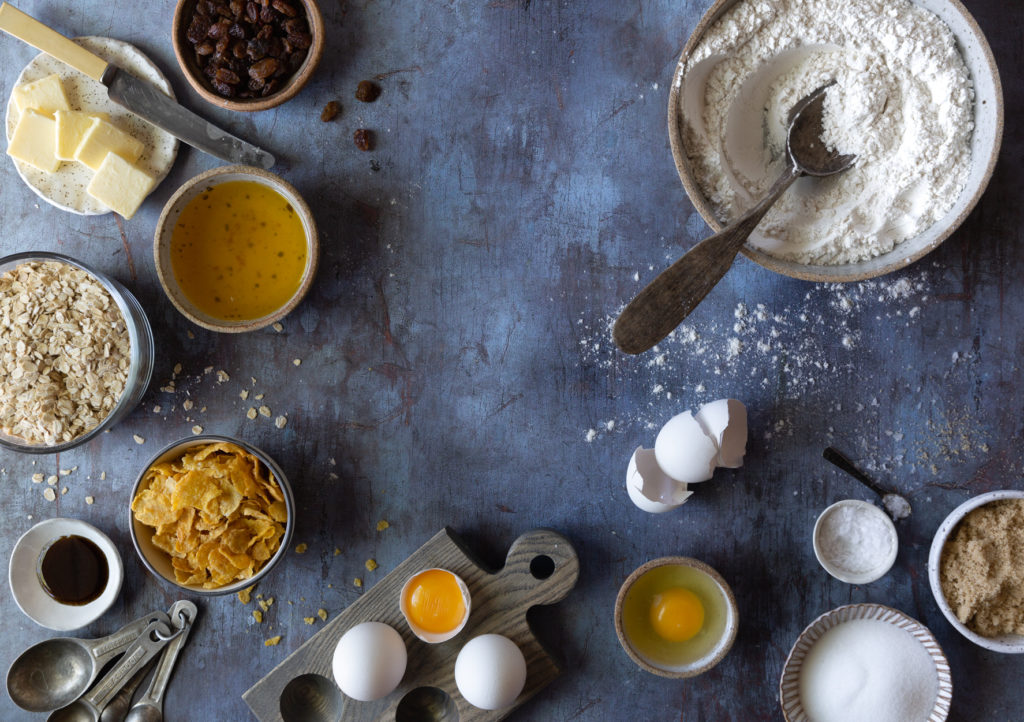
I tweaked her recipe a bit and browned the butter first. Brown butter is the like the secret sauce of baked goods. It amplifies all the flavours. It adds depth, richness and a nutty caramel flavour to these cookies. Browning butter is not difficult, but you do need to allow some time to brown and then chill it, before making the dough.
I also added some raisins to the cookie dough, because according to my family, raisins are mandatory in oatmeal cookies. I think that they would also be excellent with dried tart cherries instead of raisins. If you are a more is more kind of person, a handful of milk or blonde chocolate chunks would not be amiss. I think that dark chocolate would be too overpowering though.
Butter is composed of butterfat, milk protein and water. When you brown butter, you are essentially toasting the milk protein. As you heat the butter, and it begins to bubble and sputter away, the water evaporates and the hot butterfat begins to cook the milk solids, turning them from creamy yellow to a splendid speckled brown colour and your whole kitchen smells like toasted hazelnuts. It’s insanely gorgeous!
Pro tip: If you want to adjust any of your cookie recipes to incorporate brown butter, remember that as the water evaporates during the browning process, the butter loses some moisture, 15-20-% loss. You need to make up for that lost moisture by adding some water to the dough. For every 113 grams (1 stick) of butter you brown, add 1 tablespoon water to the dough.
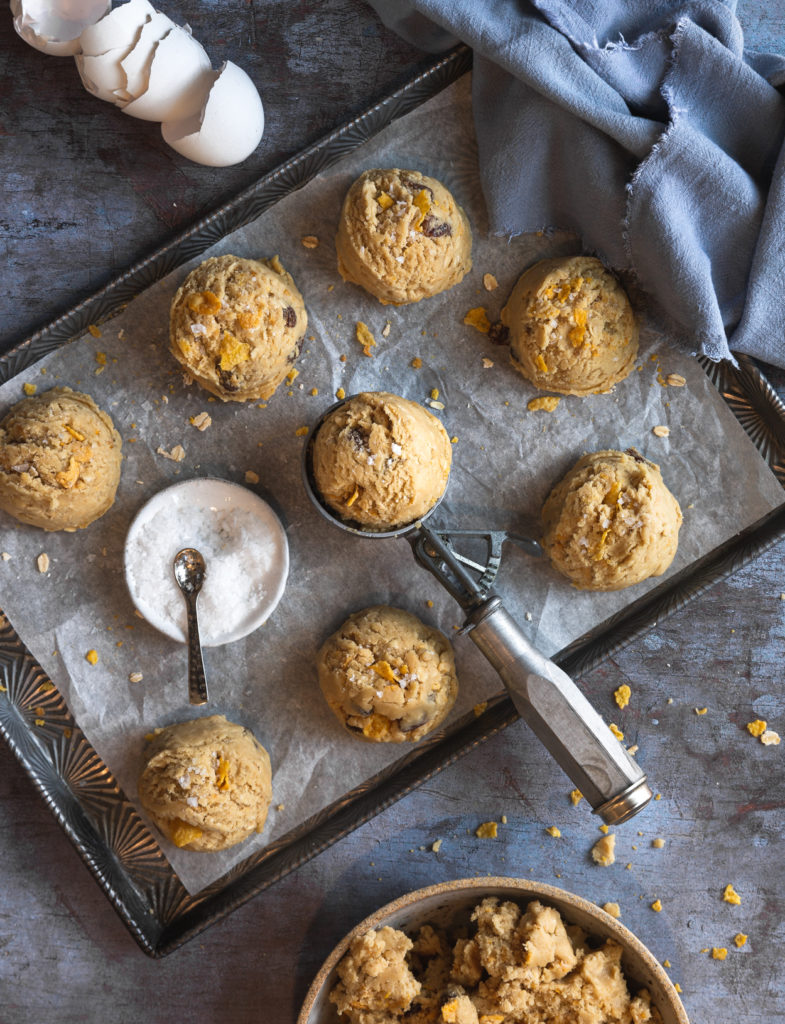
Although you can certainly bake the cookies right after making the dough, I would encourage you to chill the dough overnight. A 12-24 hour rest will really result in a better cookie. Chilling cookie dough does 3 things:
- Helps control spreading: Chilling solidifies the butter in the dough. Butter in chilled cookie dough takes more time to melt than butter in room temperature dough. The longer the butter stays solid, the less the cookies spread.
- Affects Flavour: As the dough spends time in the fridge, it dries out, thus concentrating the flavours of all the ingredients, and resulting in a more delicious cookie.
- Affects texture: Chilling allows the dry ingredients time to absorb the wet ingredients in the dough. This change in texture results in a chewier cookie with crispy edges. Cookies baked right after making the dough tend to be softer and doughier.
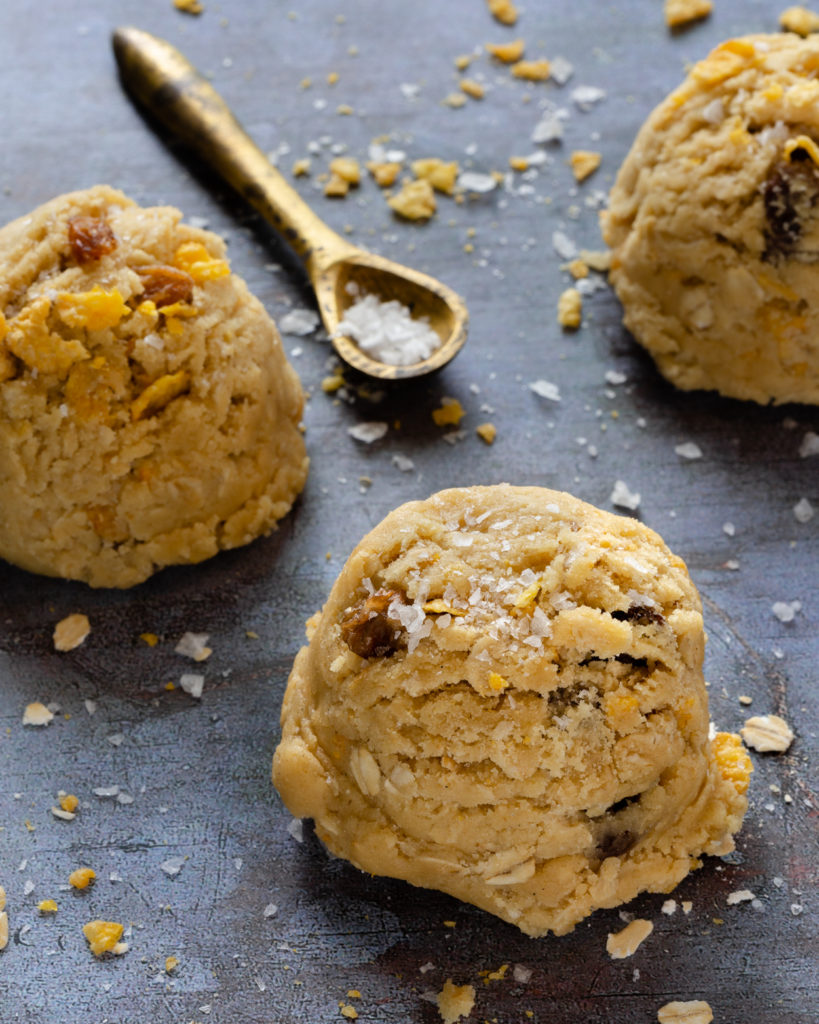
If you are a member of my youngest sister’s family, please feel free to omit the sprinkling of Maldon sea salt flakes. (Imagine my excitement when I discovered the jumbo tub!) The rest of you, please sprinkle a few flakes on each cookie before baking. It’s sublime.
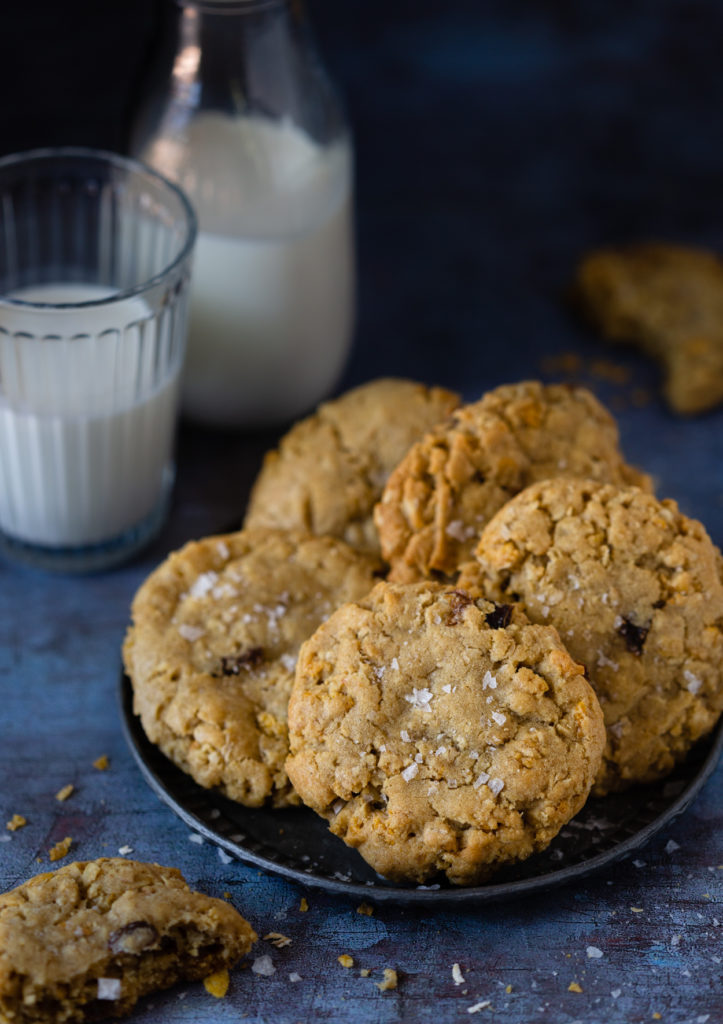
Let me know if you bake these and what you think.
